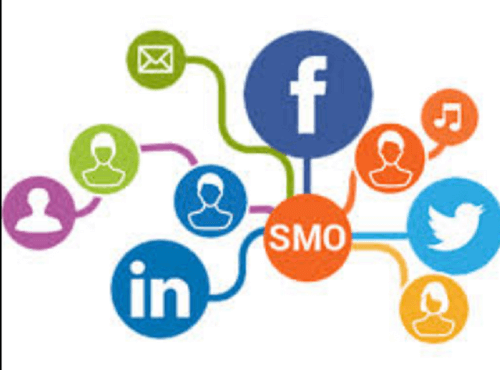The Ultimate Guide to Social Media Marketing: Building Your Brand in the Digital Age

In a world where billions of people scroll through social media platforms daily, social media marketing (SMM) has become a cornerstone of digital strategy. Whether you're a small business owner, a content creator, or a global enterprise, leveraging social media effectively can drive brand awareness, foster relationships, and boost revenue.
This blog will explore what social media marketing is, why it matters, and how to craft a winning strategy.
What Is Social Media Marketing?
Social media marketing involves using platforms like Instagram, Facebook, LinkedIn, TikTok, Twitter (X), and YouTube to promote products, services, or content. It’s more than just posting updates—SMM is a dynamic blend of engagement, creativity, analytics, and strategy designed to connect with your audience, build trust, and achieve your goals.
Why Social Media Marketing Matters
- Massive Reach: With over 4.9 billion social media users globally, platforms offer unparalleled opportunities to reach a diverse audience.
- Cost-Effectiveness: Social media ads and organic posts provide a cost-efficient way to promote your brand compared to traditional media like TV or print.
- Audience Engagement: Unlike traditional marketing, social media allows direct, two-way communication with your audience, creating relationships and loyalty.
- Real-Time Feedback: Instant interactions let you gauge audience sentiment and adjust your strategy in real-time.
- Data-Driven Decisions: Social media analytics tools provide deep insights into user behavior, preferences, and campaign performance.
Key Components of a Social Media Marketing Strategy
1. Set Clear Goals
Define what you want to achieve. Common objectives include:
- Brand Awareness: Reaching new audiences and increasing visibility.
- Engagement: Encouraging likes, comments, shares, and conversations.
- Lead Generation: Capturing contact information for sales funnels.
- Sales: Driving direct purchases through product promotions.
Use SMART goals—Specific, Measurable, Achievable, Relevant, and Time-bound—to track progress effectively.
2. Know Your Audience
Understanding your audience is essential. Create detailed buyer personas that include:
- Demographics (age, gender, location).
- Interests and preferences.
- Pain points and challenges.
- Social media habits (preferred platforms, activity times).
3. Choose the Right Platforms
Each platform caters to a different audience and purpose:
- Instagram: Visual content, lifestyle brands, and influencers.
- Facebook: Community building, local businesses, and event promotion.
- LinkedIn: Professional networking and B2B marketing.
- TikTok: Viral, short-form content for younger audiences.
- YouTube: Long-form video content, tutorials, and entertainment.
Focus your efforts on platforms that align with your audience and goals.
4. Create Engaging Content
Content is the backbone of social media marketing. Develop a mix of:
- Educational Posts: Tutorials, how-to guides, and industry tips.
- Entertaining Content: Memes, challenges, and fun visuals.
- Promotional Material: Product launches, discounts, and ads.
- User-Generated Content: Customer testimonials, reviews, and photos.
Use a consistent brand voice and visuals to maintain identity. Experiment with formats like videos, stories, carousels, and live sessions to keep things fresh.
5. Leverage Paid Advertising
Social media ads allow you to target specific demographics and behaviors. Start small with boosted posts or ads and refine campaigns based on performance. Platforms like Facebook Ads Manager and LinkedIn Campaign Manager offer robust tools for creating effective ad campaigns.
6. Engage with Your Audience
Engagement builds trust and fosters loyalty.
- Respond to comments and messages promptly.
- Like and share user-generated content.
- Use polls, Q&A sessions, and live streams to interact directly.
7. Use Analytics to Measure Success
Track metrics like:
- Reach and Impressions: How many people see your content.
- Engagement Rate: Likes, comments, shares, and clicks.
- Conversion Rate: Actions taken, such as signing up for a newsletter or making a purchase.
Platforms like Instagram Insights, Facebook Analytics, and Google Analytics offer detailed performance data.
- Questions and Answers
- Opinion
- Motivational and Inspiring Story
- Technology
- Live and Let live
- Focus
- Geopolitics
- Military-Arms/Equipment
- Segurança
- Economy
- Beasts of Nations
- Machine Tools-The “Mother Industry”
- Art
- Causes
- Crafts
- Dance
- Drinks
- Film/Movie
- Fitness
- Food
- Jogos
- Gardening
- Health
- Início
- Literature
- Music
- Networking
- Outro
- Party
- Religion
- Shopping
- Sports
- Theater
- Health and Wellness
- News
- Culture

